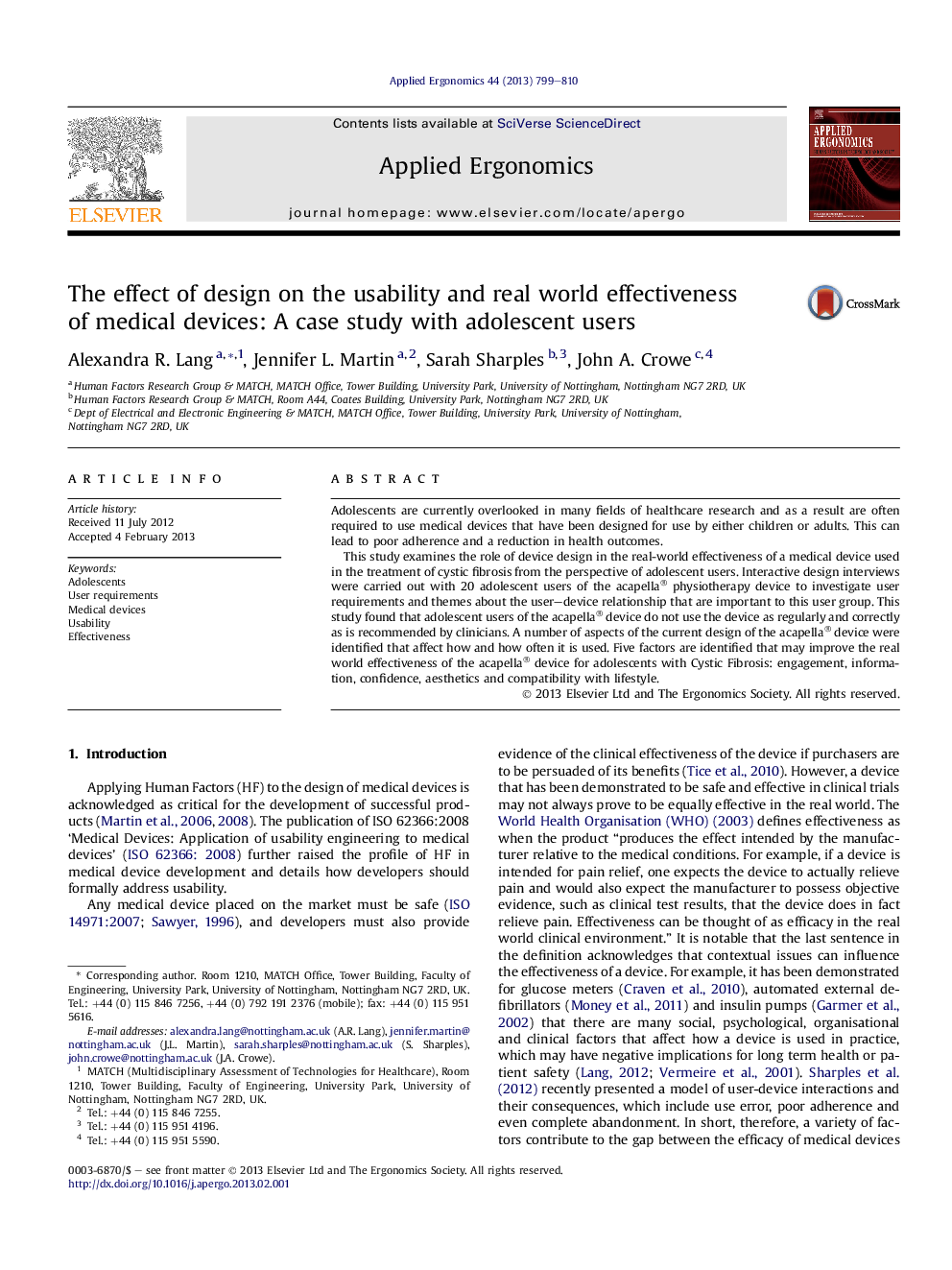| Article ID | Journal | Published Year | Pages | File Type |
|---|---|---|---|---|
| 549339 | Applied Ergonomics | 2013 | 12 Pages |
Adolescents are currently overlooked in many fields of healthcare research and as a result are often required to use medical devices that have been designed for use by either children or adults. This can lead to poor adherence and a reduction in health outcomes.This study examines the role of device design in the real-world effectiveness of a medical device used in the treatment of cystic fibrosis from the perspective of adolescent users. Interactive design interviews were carried out with 20 adolescent users of the acapella® physiotherapy device to investigate user requirements and themes about the user–device relationship that are important to this user group. This study found that adolescent users of the acapella® device do not use the device as regularly and correctly as is recommended by clinicians. A number of aspects of the current design of the acapella® device were identified that affect how and how often it is used. Five factors are identified that may improve the real world effectiveness of the acapella® device for adolescents with Cystic Fibrosis: engagement, information, confidence, aesthetics and compatibility with lifestyle.
► Medical devices which are clinically proven may not be effective in the real world. ► The acapella® physiotherapy device does not meet adolescent user needs. ► Medical Device design should promote adherence to regular and correct use. ► Adolescents are interested in engagement, information, and aesthetics of devices. ► Adolescent users want to be confident in and trust their medical device.
